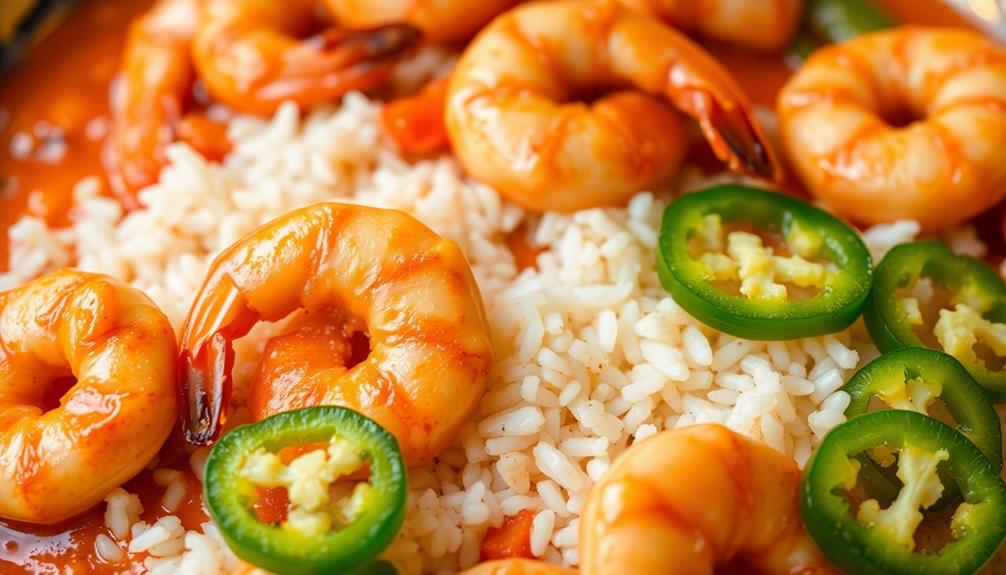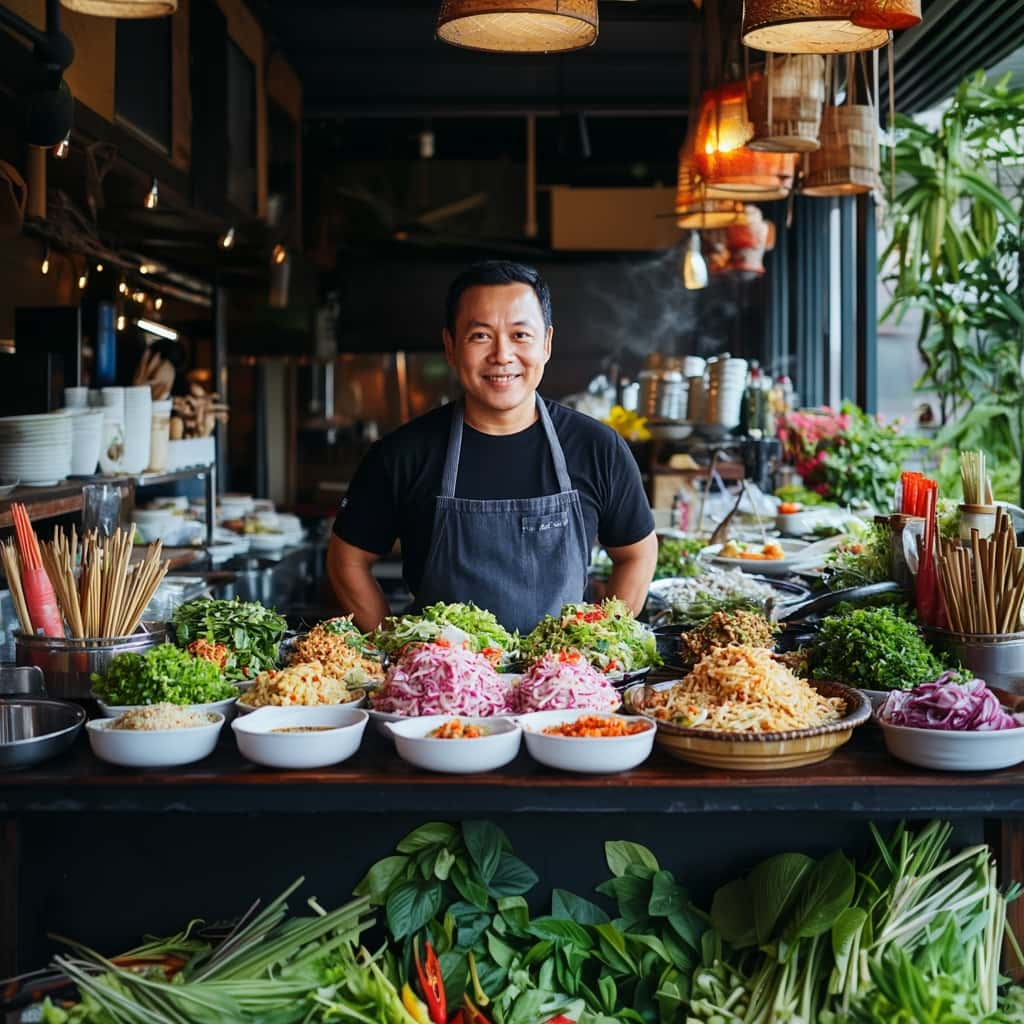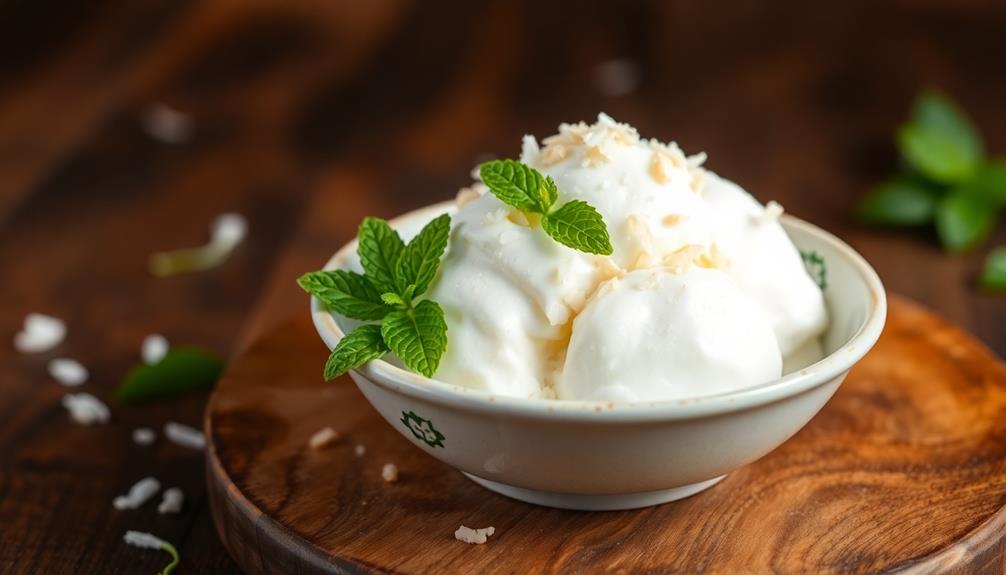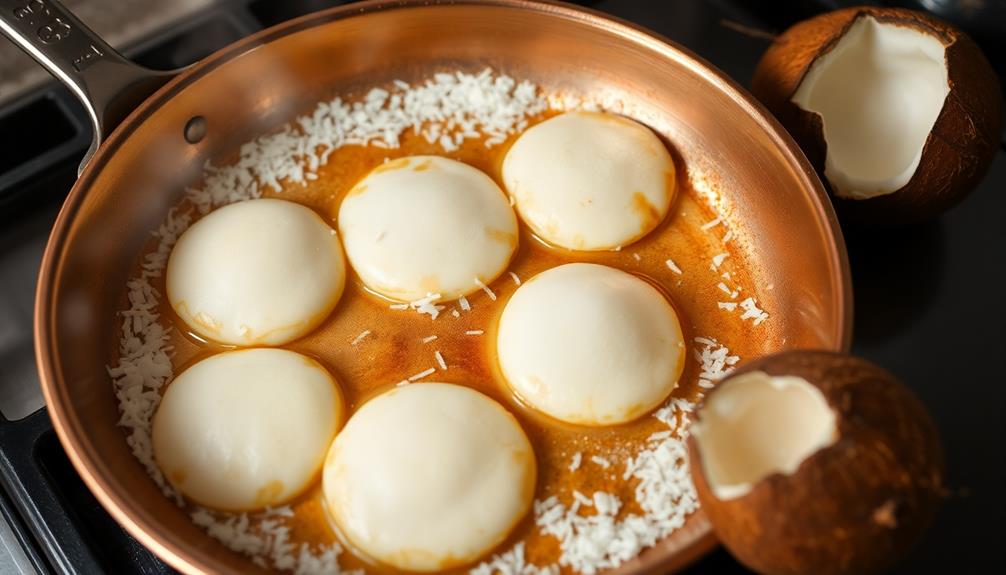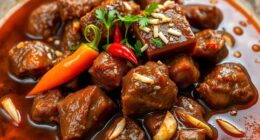Khao Kha Moo is a beloved Thai classic that features tender braised pork leg simmered in a fragrant broth, served over aromatic jasmine rice. Originating in the early 20th century from the Chinese Hokkien community, this dish has evolved with the integration of local Thai ingredients like fish sauce and palm sugar. The pork is slowly cooked until it practically melts in your mouth, while the jasmine rice provides a comforting base. Optional garnishes like crispy pork skin and fresh herbs add textural contrast and layers of flavor. This beloved street food and home-cooked favorite is sure to delight your senses and leave you craving more.
Key Takeaways
- Khao Kha Moo is a Thai dish featuring tender braised pork leg cooked in a savory broth and served over jasmine rice.
- The dish originated in early 20th century Thailand from the Chinese Hokkien community and has become a staple in Thai street food and home cooking.
- The slow-cooking braising method is essential for developing deep flavors and achieving a melt-in-your-mouth texture of the pork.
- Key ingredients include pork shoulder or belly, garlic, shallots, and various sauces like soy sauce, fish sauce, and brown sugar.
- Khao Kha Moo can be customized with different cuts of pork, spices, and garnishes to suit personal taste preferences.
History
Khao kha moo, a beloved Thai dish, has a long and rich history that can be traced back to the early 20th century. The dish's origins lie in the Chinese Hokkien community, who brought their braising techniques to Thailand.
Over time, the recipe evolved, incorporating local ingredients like fish sauce, palm sugar, and star anise to create the distinctive flavors we know today.
The name "khao kha moo" translates to "rice with braised pork leg," reflecting the dish's core components. The pork is slowly simmered until it's meltingly tender, then served atop a bed of fragrant jasmine rice.
The rich, savory sauce infuses the rice, making each bite a harmonious blend of textures and tastes.
Khao kha moo has become a staple of Thai street food and home cooking, beloved for its comforting flavors and easy preparation.
Today, it's a cherished part of the country's culinary heritage, a testament to the enduring appeal of this simple yet delicious dish.
Recipe
Khao Kha Moo is a beloved Thai dish that showcases the delectable combination of tender braised pork and fragrant, flavorful rice. This classic street food is a staple in Thai cuisine, offering a hearty and comforting meal that's both satisfying and bursting with authentic flavors.
At the heart of Khao Kha Moo lies the slow-cooked pork, which is simmered in a savory broth until it becomes melt-in-your-mouth tender. The rich, gelatinous texture of the pork is a testament to the care and attention that goes into its preparation, making it the star of this dish. Other key components of Khao Kha Moo include steamed bok choy, pickled mustard greens, and a generous drizzle of the hearty broth. The dish is often served over a bed of jasmine rice, which soaks up all of the flavorful juices. The tapioca dumplings recipe adds an extra layer of texture and a hint of sweetness to balance out the savory elements of the dish.
- Pork shoulder or pork belly, cut into 1-inch cubes
- Garlic, minced
- Shallots, thinly sliced
- Soy sauce
- Fish sauce
- Oyster sauce
- Sugar
- Star anise
- Cinnamon stick
- Cloves
- Jasmine rice
- Broth (chicken or pork)
- Hard-boiled eggs (optional)
- Cilantro, for garnish
- Chili sauce or nam pla prik, for serving
Begin by searing the pork cubes in a large pot or Dutch oven until they develop a nice caramelized crust. Add the garlic and shallots, and sauté until fragrant.
Pour in the soy sauce, fish sauce, oyster sauce, and sugar, and stir to combine. Nestle the star anise, cinnamon stick, and cloves into the pot, then add the broth. Bring the mixture to a boil, then reduce the heat and let the pork simmer for 2-3 hours, or until the meat is incredibly tender and the flavors have melded together.
To serve, spoon the braised pork and its flavorful cooking liquid over a bed of steaming jasmine rice. Top with hard-boiled eggs, if desired, and garnish with fresh cilantro.
Accompany the dish with a side of chili sauce or nam pla prik, allowing your guests to adjust the heat and seasoning to their liking. Enjoy this authentic and comforting Khao Kha Moo, a true taste of Thailand.
Cooking Steps
First, gently simmer the pork until it's tender.
Then, add the garlic and seasonings to infuse the flavors.
Step 1. Gently Simmer Pork Until Tender
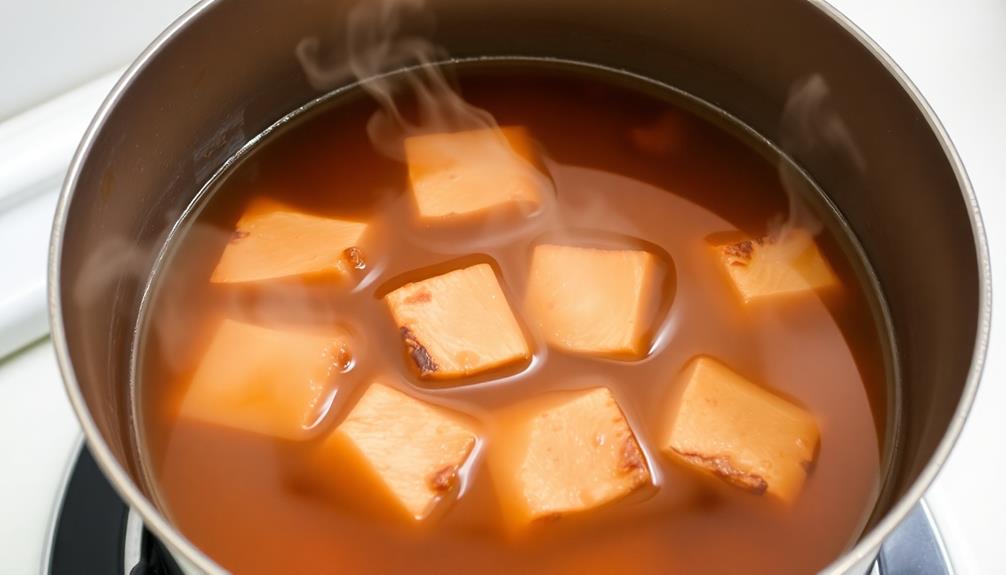
Next, you'll want to gently simmer the pork until it's meltingly tender. Lower the heat to medium-low and let the pork cook, stirring occasionally, for about 1 to 1.5 hours.
This slow cooking process is crucial for breaking down the tough connective tissues, transforming the pork into a luxuriously soft, flavor-packed texture. Be patient – the longer you simmer, the more tender the meat will become.
During this time, the pork will release its natural juices, creating a rich, aromatic braising liquid. This liquid will gradually thicken and concentrate, developing a deep, savory flavor.
Keep an eye on the pot, adding a splash of water if needed to prevent the liquid from reducing too much. You want just enough braising liquid to keep the pork submerged and slowly tenderize it.
The end result should be pork that practically falls apart at the touch of a fork.
Step 2. Add Garlic and Seasonings
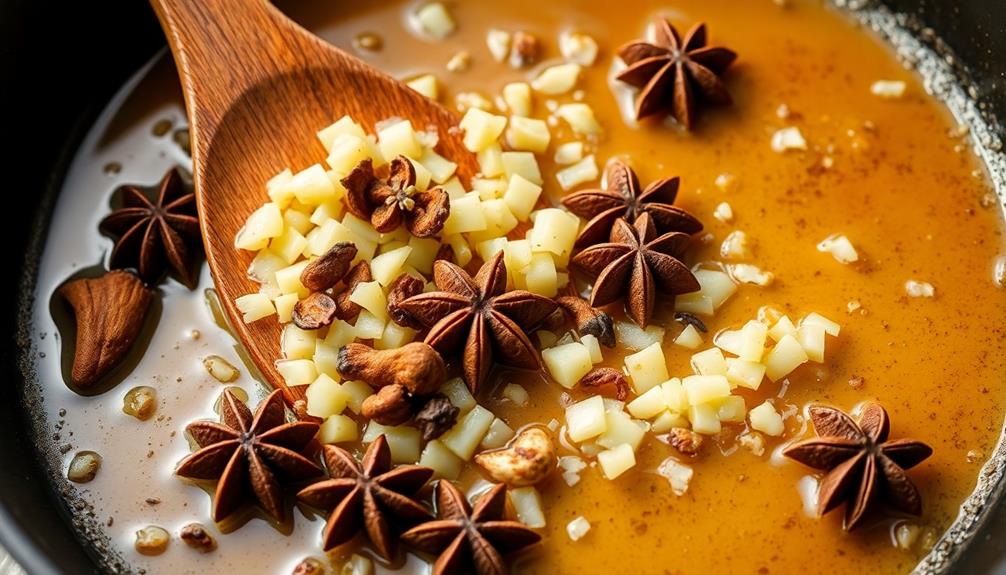
Once the pork has simmered until tender, add the minced garlic to the pot. The aroma of the garlic will instantly fill the kitchen, making your mouth water in anticipation.
Stir the garlic into the pork, allowing it to cook for a minute or two. This brief sauté will help mellow the raw garlic flavor and infuse the dish with its savory essence.
Next, it's time to season the braised pork with soy sauce, fish sauce, and brown sugar. Start with a couple of tablespoons of each and taste as you go, adjusting the amounts to your personal preference.
The soy sauce will lend a rich, umami note, while the fish sauce adds a subtle saltiness and the brown sugar provides a touch of sweetness to balance the flavors.
Stir everything together until the seasonings are fully incorporated, then let the mixture simmer for an additional 5-10 minutes to allow the flavors to meld.
Step 3. Add Chopped Cilantro and Chili
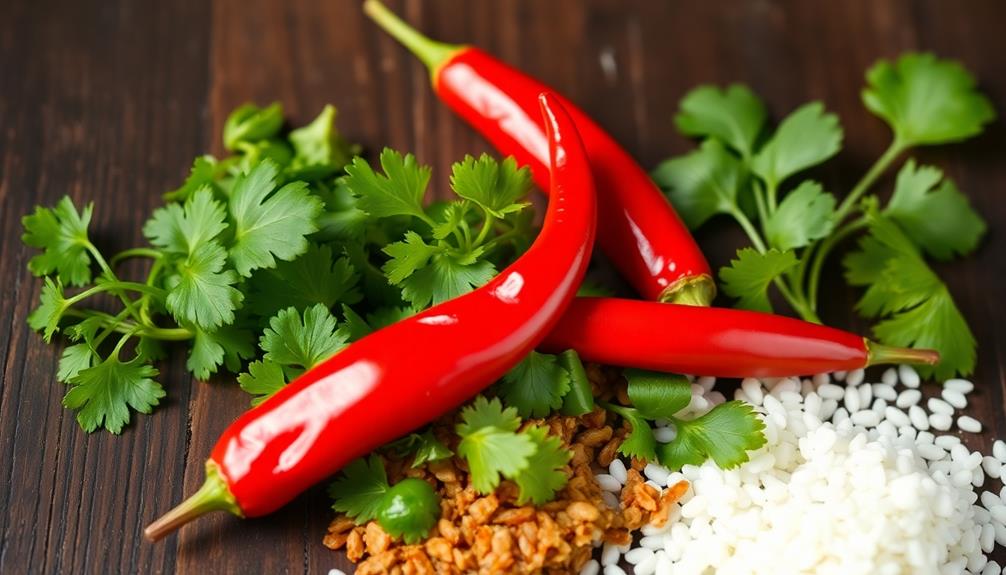
To finish the dish, stir in the chopped cilantro and sliced chili peppers.
The fresh cilantro will add a vibrant, herbal note that balances the rich pork. Be sure to use the stems as well as the leaves for maximum flavor.
As for the chili peppers, you can adjust the amount to suit your spice preference. Start with a small amount and add more if you want a bigger kick. The chili will lend a pleasant heat that complements the savory pork beautifully.
Gently fold everything together until the cilantro and chili are evenly distributed. The final dish should have a beautiful blend of aromas and textures.
Serve the Khao Kha Moo immediately, allowing your guests to customize their bowls with the fresh cilantro and chili.
Enjoy this authentic Thai dish that's bursting with flavor in every bite.
Step 4. Serve Over Steamed Jasmine Rice
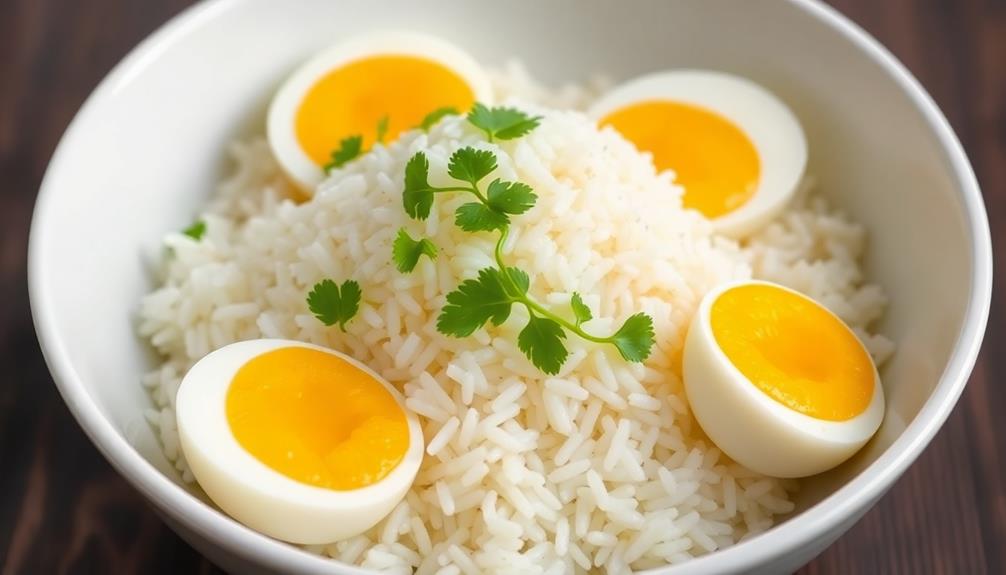
The Khao Kha Moo pairs excellently with a bed of fragrant, steamed jasmine rice. The rice soaks up the rich, savory flavors of the braised pork, creating a harmonious balance.
To prepare the rice, start by rinsing the grains in a fine-mesh strainer until the water runs clear. This removes any excess starch, ensuring the rice cooks up light and fluffy.
Next, combine the rinsed rice with an equal amount of water in a saucepan. Bring the mixture to a boil, then reduce the heat to low, cover, and simmer for 15-20 minutes, or until the rice is tender and the liquid is absorbed.
Fluff the rice with a fork before serving. The steamed jasmine rice provides a neutral base that allows the bold, aromatic notes of the Khao Kha Moo to shine.
Serve the braised pork over the fragrant rice, and enjoy this classic Thai dish in all its glory.
Step 5. Garnish With Crispy Pork Skin
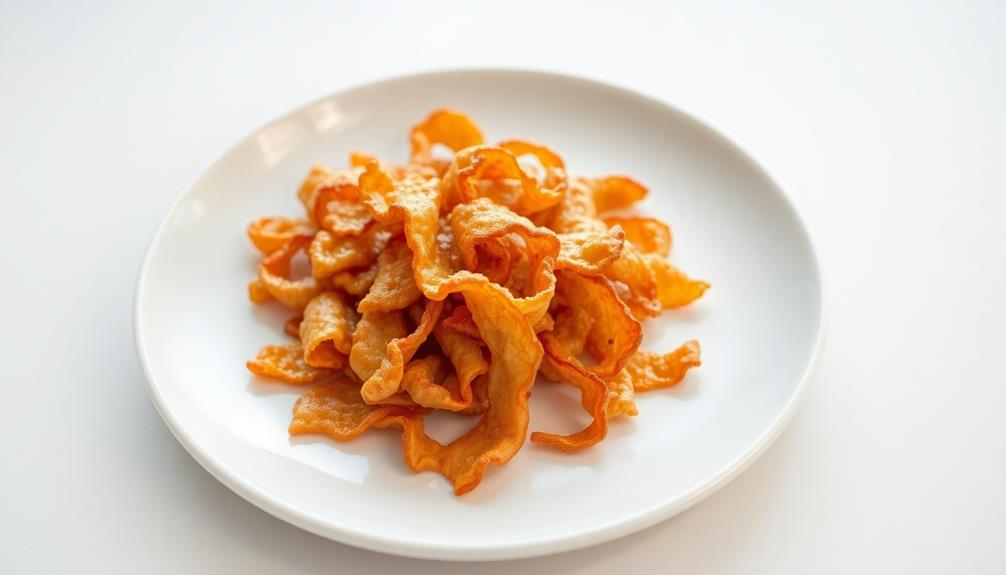
To elevate the Khao Kha Moo, you'll want to add a crunchy, savory garnish of crispy pork skin. This simple topping brings a wonderful contrast of textures and flavors to the dish.
Start by thinly slicing the pork skin into small, bite-sized pieces. Heat a pan over medium-high heat and add the pork skin. Fry the pieces, turning occasionally, until they're golden brown and crispy, about 5-7 minutes.
Be careful not to overcrowd the pan, as this can cause the pork skin to steam rather than crisp up. Once the pork skin is perfectly crispy, transfer it to a paper towel-lined plate to drain off any excess oil.
Sprinkle the crispy pork skin generously over the top of the steaming Khao Kha Moo just before serving. The salty, crunchy pork skin adds an irresistible texture and flavor boost to this beloved Thai dish.
Final Thoughts
With the delectable Khao Kha Moo now explored, it's time to reflect on this beloved Thai dish.
You've learned how to create the meltingly tender pork, aromatic broth, and perfectly cooked rice that make up this comforting meal. The key is in the slow braising, which allows the pork to develop rich, complex flavors.
Don't forget to garnish with that crispy pork skin – it adds an incredible textural contrast.
Now that you've mastered the basics, feel free to experiment. Try swapping in different cuts of pork, or adding aromatics like star anise or cinnamon.
The wonderful thing about Khao Kha Moo is its versatility. Whether you keep it classic or put your own twist on it, you'll end up with a deeply satisfying dish that's sure to impress.
Frequently Asked Questions
What Are the Traditional Accompaniments for Khao Kha Moo?
When enjoying this traditional dish, you'll typically find it's accompanied by crunchy pickled vegetables, a spicy chili sauce, and perhaps a fresh herb garnish to balance the rich, tender pork.
How Long Can the Braised Pork Leg Be Stored?
The braised pork leg can be stored for up to 4 days in the refrigerator when kept in an airtight container. However, it's best to consume it within 2-3 days for optimal freshness and flavor.
What Is the Difference Between Khao Kha Moo and Other Thai Pork Dishes?
The key difference between khao kha moo and other Thai pork dishes is the braising method. While other dishes may use stir-frying or grilling, khao kha moo involves slowly simmering the pork until it's meltingly tender and infused with aromatic spices.
Can Khao Kha Moo Be Made With Other Types of Meat?
Absolutely! You can substitute the pork in many Thai pork dishes with other meats like chicken, beef, or even tofu. The braising technique and seasoning blend work well with a variety of proteins.
Is Khao Kha Moo Commonly Found in Thai Restaurants Outside of Thailand?
Khao kha moo, the Thai braised pork leg dish, is not commonly found in Thai restaurants outside of Thailand. You'll more likely encounter it in Thai-centric eateries or specialty establishments that focus on authentic regional Thai cuisine.

